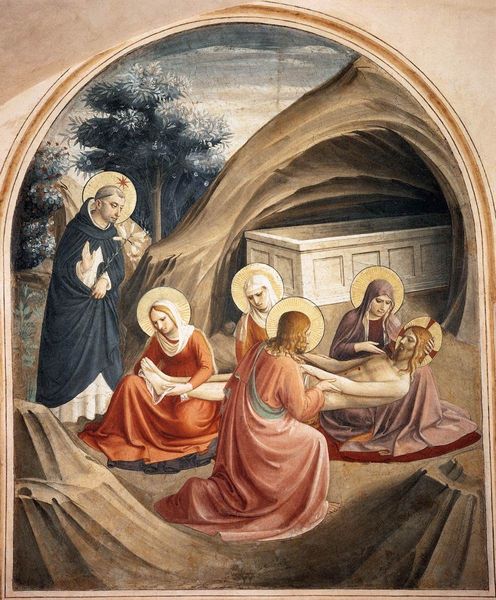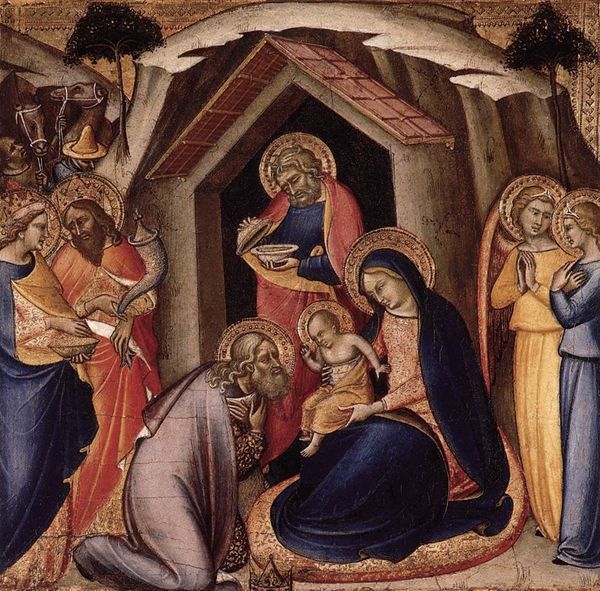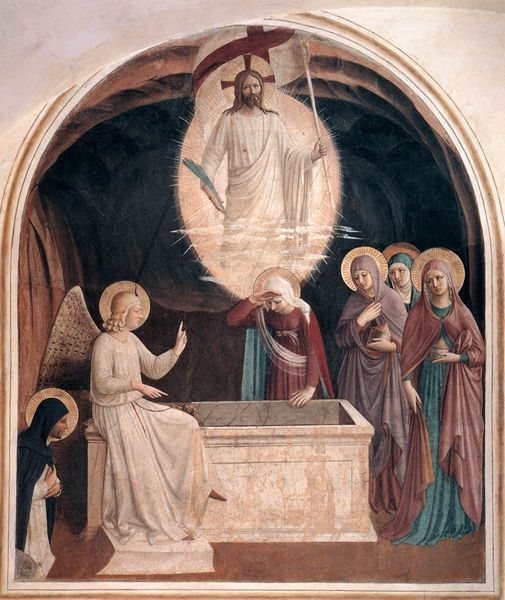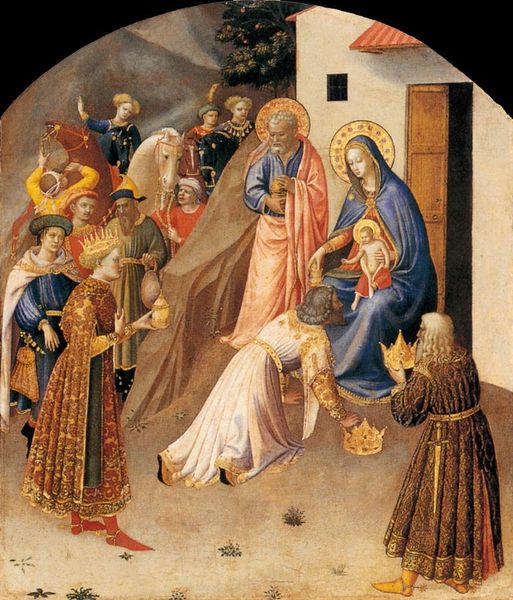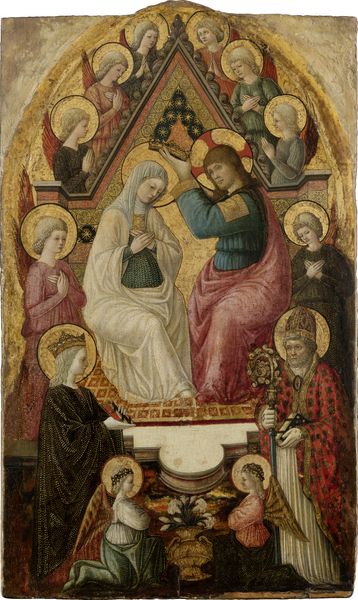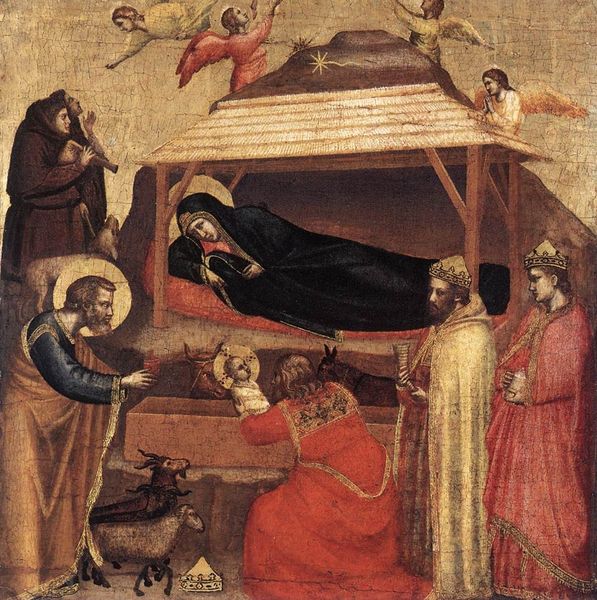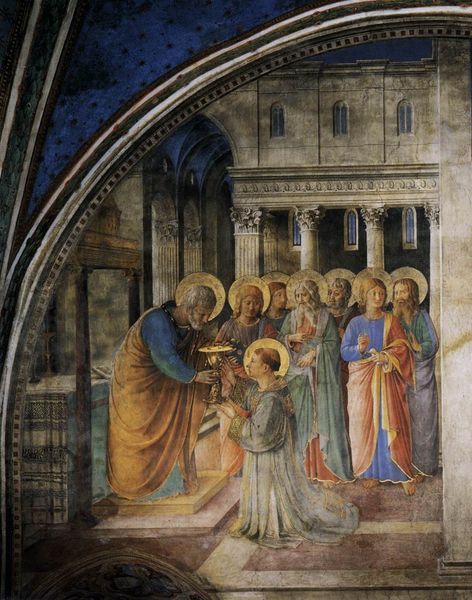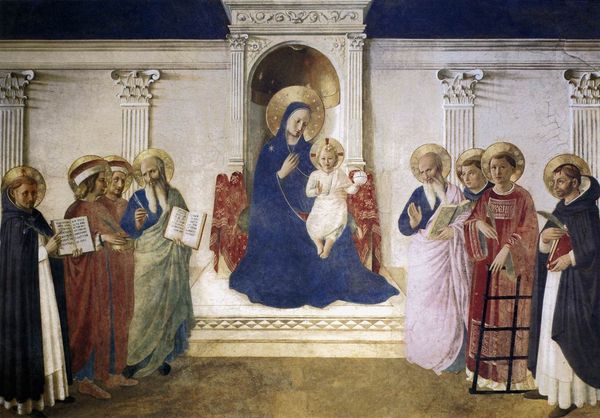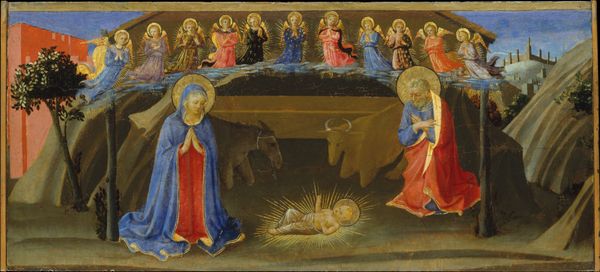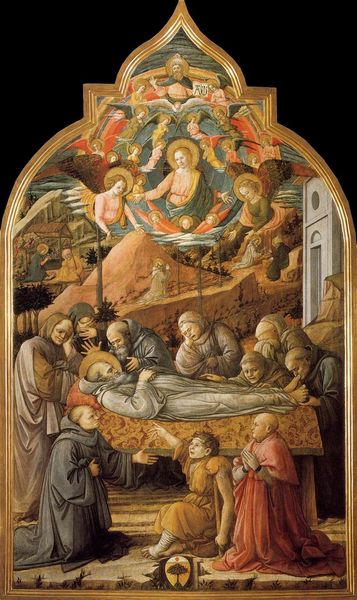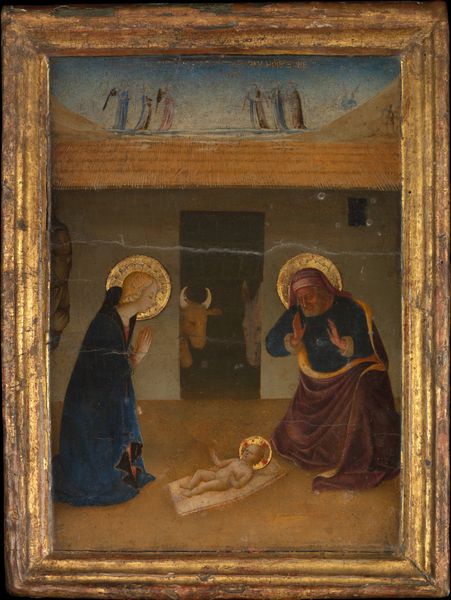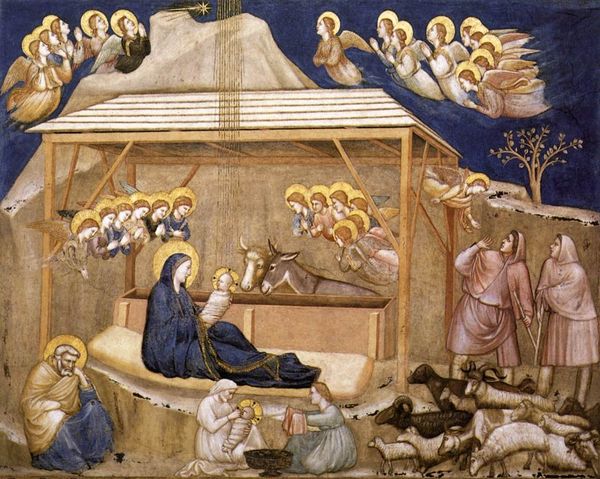
tempera, painting
#
tempera
#
painting
#
landscape
#
figuration
#
oil painting
#
christianity
#
history-painting
#
italian-renaissance
#
early-renaissance
#
watercolor
#
christ
Copyright: Public domain
Curator: Here we have Fra Angelico's "Nativity," painted around 1441 and currently housed in the Basilica di San Marco in Florence. The piece is tempera on panel, showcasing the traditional scene of Christ's birth. Editor: My initial impression is its simplicity. It feels very grounded and direct, almost like a stage setting. You have these distinct areas – the holy family, the manger, and the simple structure above. The materiality almost feels sparse, intentionally so. Curator: Absolutely, that sense of austerity reflects the artist’s Dominican beliefs. But beyond the visual economy, there's a deep theological narrative being constructed. Consider how the composition centers on the divine infant, but equally emphasizes the supporting roles of Mary and Joseph. This echoes the increasing humanist concern of the period: focusing on humanity, while never ignoring divinity. Editor: And consider the tempera itself. Angelico had full agency over it—a readily available medium and how he used it becomes inherently tied to his artistic process, and what I also notice are those beautiful, subdued tones. Curator: I agree. Those pastels and whites point towards the spiritual purity, reinforcing the theme. Yet, let’s not forget the presence of Saint Peter Martyr to the right. How do you see this detail shaping the meaning? Editor: Saint Peter offers a reminder of martyrdom and the future sacrifices tied to Christ. It seems such a carefully chosen subject to focus a message on and make this statement so accessible with humble mediums that convey these themes. Curator: This blend of artistic craftsmanship and theological weight also emphasizes Fra Angelico’s role as both an artist and a religious figure. He wasn't merely depicting the Nativity but reinforcing a narrative about holiness, accessibility and redemption relevant to the place that would later receive this, Florence. Editor: Right. Seeing this reminds me to always examine the how, when, and why, and that often a piece of art has deeper roots in humanity than first appears. Curator: For me, encountering this artwork prompts deeper thought about the interwoven threads of art, faith, and the social climate in Early Renaissance Italy and challenges me to study all intersections and messages within art history.
Comments
No comments
Be the first to comment and join the conversation on the ultimate creative platform.
